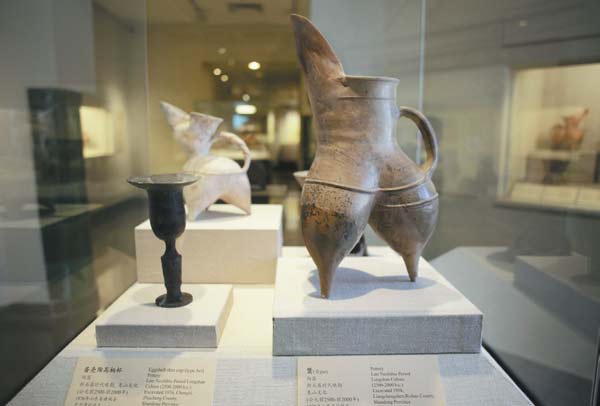Ancient artifacts, modern museum
Updated: 2013-06-09 03:27
By Peng Yining (China Daily)
|
|||||||||
|
 |
|
The museum's collection spans a period of 280,000 years. |
Jill Sackler said she still has the table from Ming Dynasty (1368-1644), at her home in New York City.
She said her husband was very interested in preserving China's rich history for future generations, and his offer to build a teaching museum was accepted by the Chinese government in the 1980s. PKU was chosen by Chinese officials as the location, as its archaeology department was the best in China.
"He knew that people in China would benefit from a teaching museum," said Jill Sackler.
She said in the 1980s there was very little experience of cooperation between China and the West, so the museum could be considered a bridge connecting different countries and cultures.
Opened in 1993, the museum's collection consisted of more than 10,000 objects at that time, spanning a period of 280,000 years, from Paleolithic hominids and stone-tool remains to costumes, ceramics and paintings from the current era.
It was China's first teaching museum, and was also the only museum in China to be equipped with modern technology such as temperature- and humidity-controlled environments, air conditioning, lights from Czechoslovakia and display cases from Germany, said Song, the museum's deputy director.
On May 27, to celebrate its 20th anniversary, the museum presented an exhibition of cultural relics unearthed at a 1,000-year-old graveyard belonging to a noble's family in the Northern Song Dynasty (960-1127).
Zhang Yun, archeologist and excavator, said the site was regarded as one of the "Ten Greatest Archeology Discoveries in China in 2010".
"Although it is a teaching museum, Sackler museum at Peking University represents a high academic level of archaeology in China," said Zhang. "That's why we chose the museum to display the relics for the first time."
She said the design of the exhibition is outstanding: All relics have been professionally sorted with different categories and objects artistically arranged in the exhibition hall. Visitors can not only see artifacts from a noble family's grave, but also learn about the lifestyle and the ideology of people from the Northern Song Dynasty.
Related Stories
China reports top 10 archaeological finds in 2012 2013-04-09 19:04
Nanjing University History Museum and Art and Archaeology Museum 2012-05-17 09:08
China to build 1st archaeological museum 2012-02-09 15:44
Two archaeological site parks to open in autumn 2010-07-26 18:10
China’s Underwater Archaeology 2010-06-16 11:40
Schedule










